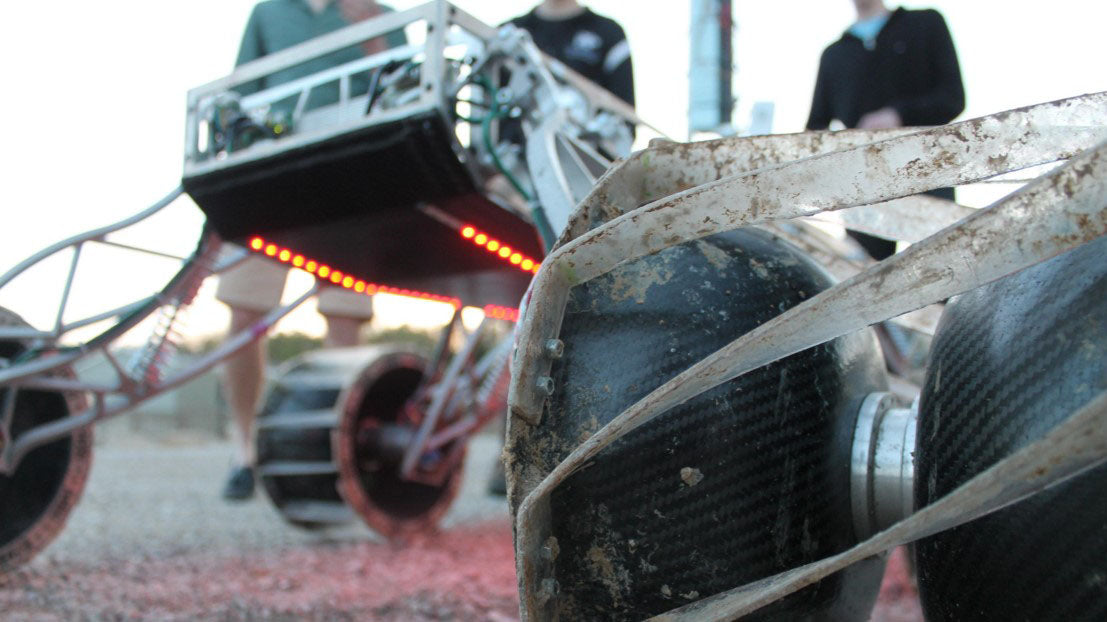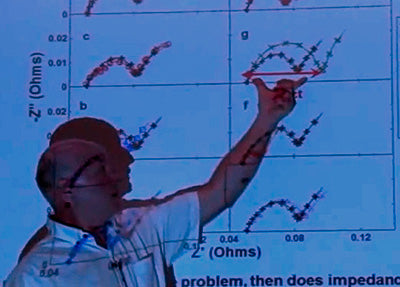Awesome Batteries Part 1 - Inspecting the New Panasonic-Sanyo NCR18650BF September 10 2014, 4 Comments
Table of Contents
- Introduction
- A Brief History
- Panasonic Official Data Sheet
- Visual Inspection, Measurements, Unwrapping
- Technical Discharge Test
- Checking Resistance
- Flashlight Discharge Test
- E-cigarettes, Vaporizers, and Mods
- Equipment Used
- Panasonic Supplementary Documents
- Conclusion
Introduction
The NCR18650BF is a new li-ion battery from Panasonic-Sanyo.
We spent a total of 30 hours testing and researching the NCR18650BF cell for this post.
A Brief History

Half of vendors call this a Sanyo battery, the other half call it a Panasonic battery, so what's the deal? Which one is it? The story is a little deep. Like Panasonic, Sanyo is a very old and integral part in the history of Japanese electronics. Unfortunately, in 2004, the Chūetsu earthquake destroyed Sanyo's semiconductor plant.
Sanyo restructured, to try and save the company and invested into rechargeable batteries. Today, Sanyo remains the world's number one producer of rechargeable batteries. This hasn't been enough to save them though, and in 2008 Panasonic announced they would buy up the company and make Sanyo a subsidiary of Panasonic.
In 2012, Panasonic announced plans to terminate the Sanyo brand. So we probably won't be seeing many Sanyo batteries in the future. The NCR18650BF might be one of the last artifacts of the Sanyo legacy.

The first look at this new version of the NCR battery - the NCR18650BF. NCR stands for "Nickel / Cobalt / Rechargeable" which designates it as a hybrid lithium-ion rechargeable battery.
Panasonic Official Data Sheet
![]()
The difference between the new BF and the older B model is that this battery includes the chemical "SiO" or silicon monoxide. In August 2014, the Berkeley National Laboratory found that the addition of SiO can improve the performance of li-ion batteries by up to 20%.
Visual Inspection and Measurements

I like the pure red PVC tube over this battery, so it looks very nice to me. You can see a close-up of a quite faded square manufacturers code, along with the letter C.

I calibrated this small jewelry scale and then weighed the battery, with it measuring in at 45.44 grams. This is normal, with the manufacturer claiming a maximum weight of 46.5 grams.

I then used my digital calipers to measure the total height of the battery, which came to 65.1 millimeters. This is normal, with the manufacturer claiming a maximum height of 65.5mm.

I accidentally pressed the 'inches' button while taking this picture. The width measures 0.69 inches, or 17.5 millimeters. Please note when you buy wholesale li-ion batteries, the size may vary by as muc has .5mm depending on instruments and actual variations in the battery which is completely normal.

Here is a close-up of the top cap (flat-top.) This is the positive terminal.

Then a close-up of the bottom, the negative side. Also note the etching "D SGMK5" along the rim.

I have taken off the PVC shrink tube wrapping so I can get a better look at the code and metal outer case.

This cardboard washer came off the top of the battery, nestled between the PVC and the top cover. It is used to further isolate the positive terminal from the negative case, probably to help prevent short circuiting in the case the edge is accidental crimped.

Here is a close-up of the top of the battery after the PVC was completely removed. Notice the vent plate in the middle, under the positive cap. This is where the battery can safely vent (or spew dangerous chemicals like ether) to release extra pressure if it overheats.
Technical Discharge Test

The first thing to do is charge the battery, and then discharge it to 2.5V and charge it again. I charged and discharged the battery several times and recorded an average of 3200mAh held comfortably. Notice the unusually long charging time of 5 hours, indicating I had probably over-discharged the cells in the previous cycle.
The nominal minimum capacity of this battery according to the Panasonic data sheet is 3250mAh which the depicted charge cycle completed successfully. Also keep in mind a 10°C temperature difference between Panasonic's testing environment and our own, which most likely accounts for the slight drop in capacity.
This is the lowest of all my discharge tests, which came in shy at just under 3000mAh. This is due to a voltage cutoff at 2.8V which is safer, but not as low as manufacturers like to discharge to. At a voltage cufoff of 2.5V the mAh rating stays safely above 3000mAh, but is slightly short of the typical capacity of this battery. All discharge tests are tested at a 2 amp drain with data collected every second. At a 2 amp drain, this battery has a 1.5 hour life.

Here is another discharge curve, albeit this one is run at a slightly higher 2.5 amp drain. Notice a nearly exact match at 2975mAh capacity with the previous test. You may also admire how flat the discharge curve of a li-ion battery is.

Here you can see our custom-built battery discharger we use for testing.

An image of our infrared heat gun recording the battery temperature during discharge. We recorded the temperature every 20 minutes during the discharge tests with only a tiny 2°C difference between each cycle, potentially indicating more stable chemistry and a higher lifetime cycle count than other models which get hotter. A low temperature also means less energy is being lost as heat.
Checking Resistance

| Milli-Ohm | Battery Voltage | Ranking |
| 75-150mOhm | 3.6V | Excellent |
| 150-250mOhm | 3.6V | Good |
| 250-350mOhm | 3.6V | Marginal |
| 350-500mOhm | 3.6V | Poor |
| Above 500mOhm | 3.6V | Fail |
We used a 1A discharge current to test this 18650's internal resistance. The test was run ten times, with an average resistance of 77.0 mR (milliohm resistance.) This is excellent and indicates a high-quality cell.
Flashlight Discharge Test

This is a budget Ultrafire 18650 flashlight which can be bought for $20 on Amazon. We like the maximum zoom feature so we can focus precisely on the lux meter, and the glass breaking escape hammer on the back is pretty neat.

The flashlight is attached to this stand, with the bulb exactly one meter from the lux meter.

This is your standard digital lux meter for testing brightness in lumens. Tests are performed in a pitch black room.
We then fully charged the battery, and put it into our flashlight. The brightness in lumens was recorded one meter from the bulb. Keep in mind, a standard 40-watt bulb is about 450 lumens. By hour eight, the light was too dim to be of any use. It was a clean discharge and performed very well. This test was started and stopped over three days with no impact on battery performance.
E-cigarettes, Vaporizers, and Mods
While the low ampere draw is not optimal for sub-ohm vaping or cloud-chasing, this battery still has a place in the community because of its high capacity. A maximum continuous discharge current of 6.8A means it will still pack a punch and can be used in most mechanical e-cigarette mods. Any battery that can store over 3000mAh will mean plenty of run time between recharge cycles.
Equipment Used

This is the Soshine SC-S7 universal charger. A nice digital display gives me a readout of milli Amp hours (mAh), charging time, volts (V), and percentage completion.
Panasonic Supplementary Documents
Learn more about the NCR-18650 series of batteries.
Conclusion

Last shot to wrap up the photo shoot. This is a good battery from a solid manufacturer. I believe it is a temporary model, a proving ground for new technology, that will soon be surpassed by an even better model. For now, this is one of the best batteries on the market and certainly worth using if it fits your application.
If deciding to go with this NCR-BF or the NCR-B we recommend the B as it has been around longer and has a more established reputation.
Because of the relatively low amp draw, the battery is best used in low-drain applications like in flashlights.
Overall Rating: 4.5 out of 5
Thanks for reading. Would you like to see something else? Questions, comments, and suggestions are welcome. Please contact us.












Comments
p salim on June 16 2017 at 07:09AM
what is the c rating for model ncr18650bf
Andre on January 25 2016 at 11:21PM
xiaomi 10000mah has 3 of these apparently if you get a genuine one.
the problem with these like others said is the comparatively high internal resistance.
Its fine for low drain high capacity uses but if you want to use them for an E-bike mod
then an additional capacitor will be needed (ideally >10F) for decent lifetime.
The higher capacity makes them take a lot longer to charge and certain chips may
throw a wobbly due to internal timeouts designed for cells 2/3 the capacity.
regina on August 07 2015 at 06:23AM
Thanks a lot for your detailed test report!
At the moment, I try to find out if there is a difference between the green Panasonic cell 18650B (3400mAh) and the Sanyo cell (3400mAh).
Do you know by chance if there are any differences between these cells?
best regards
Regina
poster on February 01 2015 at 01:40AM
in you opinion is the best 18650 on the market NOW (not for vaping) but for regular flashlight and power bank use
in terms for power, cycle life and price
BTW i can get them today for LE$$ THEN $7 each
thank you